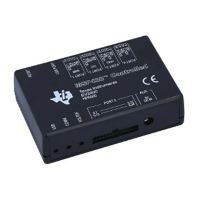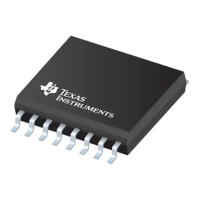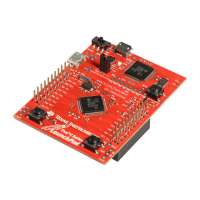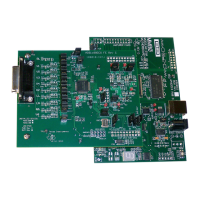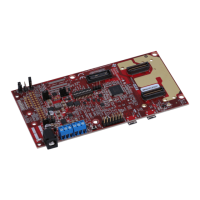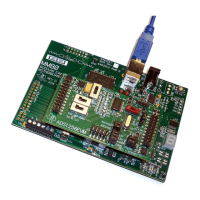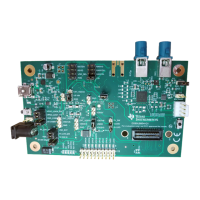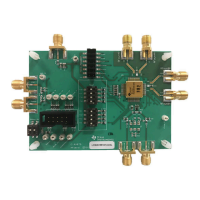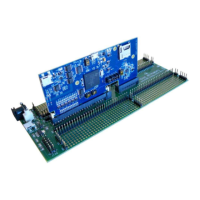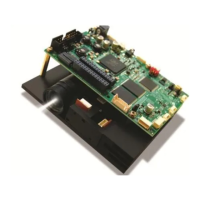Temp Sensor
OPT3101 MSP430
I2C_S
GP1 (DATA_RDY)
GP2 (REF_CLK)
I2C_M GPIO
Switch
Indicator
LED
3x GPIO
(R,G,B)
TX0
IN
M/P
LDO USB Port
5 V3.3 V
PD
LED
www.ti.com
OPT3101EVM Hardware
5
SBAU309A–February 2018–Revised June 2018
Submit Documentation Feedback
Copyright © 2018, Texas Instruments Incorporated
OPT3101 Evaluation Module
3 OPT3101EVM Hardware
Figure 2 shows the hardware block diagram for the OPT3101EVM. The block diagram includes all major
components on the PCB and shows how they are connected. The direction of the arrow shows the flow of
information between the components. Figure 3 and Figure 4 show the physical location of these
components on the PCB. The following subsections describe each component in detail.
Figure 2. EVM Hardware Block Diagram
3.1 MSP430 Microcontroller
The MSP430F5503 has a USB interface, allowing connection to a PC, and acts as a communication
bridge between the OPT3101 and the PC. The MSP430 microcontroller is loaded with C++ firmware for
interfacing with the OPT3101 over I
2
C, in addition to the other components on the PCB. The MSP430 also
has a calibration configuration for the board stored in onboard flash storage.
The MSP430 registers 2 USB COM ports with the PC it is plugged in to. The OPT3101 Control Port is
used for sending control commands to the MSP430. This includes reading and writing registers on the
OPT3101 and interfacing with the MSP430 flash storage. The OPT3101 Data Port is used only for
streaming data from the EVM to the PC. This allows for maximum data rates when receiving real-time
data from the OPT3101 during high-speed capture.
3.2 I
2
C Buses and Temperature Sensor
The OPT3101 has two I
2
C buses. On the main I
2
C bus, labeled I2C_S, the OPT3101 is a slave device.
This bus is used to control the OPT3101 and read data by reading and writing registers on the device. The
OPT3101 also has a secondary I
2
C bus, I2C_M, for which it is the master. This bus allows an external
temperature sensor and an EEPROM to be controlled by the OPT3101. The OPT3101 contains an
internal temperature sensor, which is used for temperature calibration. This sensor has 8-bit integer
resolution. Adding an external temperature sensor, such as that used on the EVM, allows up to 12 bits of
resolution to be obtained with one sign bit, 7 integer bits, and 4 fractional bits. This allows for more
accurate temperature correction. An external EEPROM allows for an OPT3101 register configuration to be
stored and loaded on power-up. This means that the device does not need an I
2
C master to configure it on
power-up. On the EVM, only a temperature sensor is used on this bus.
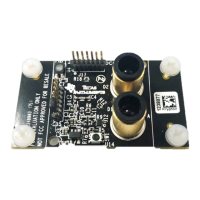
